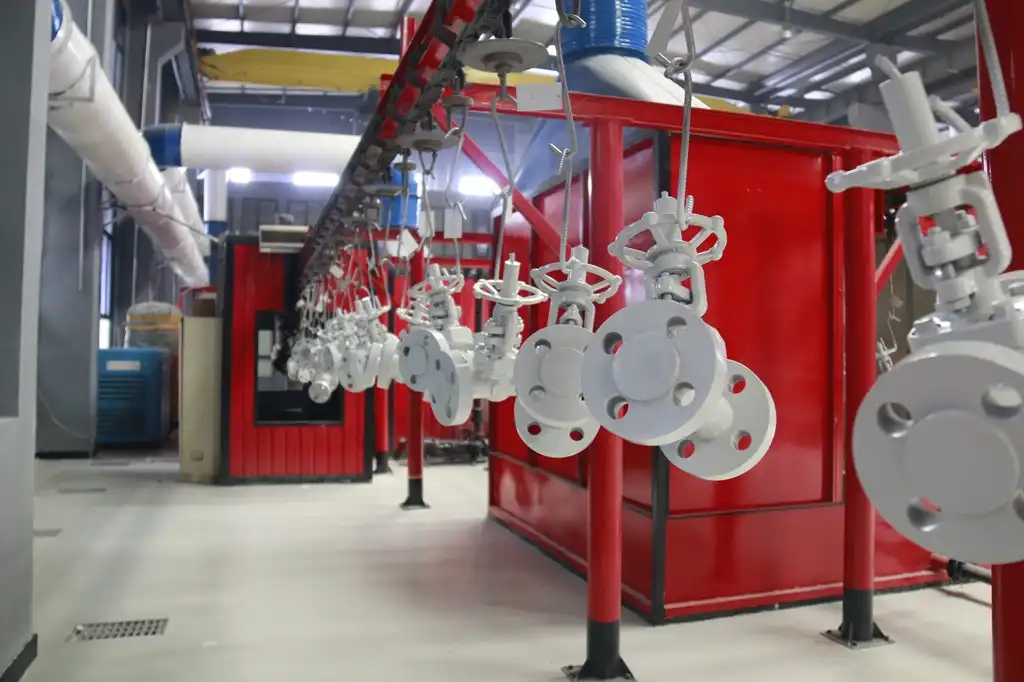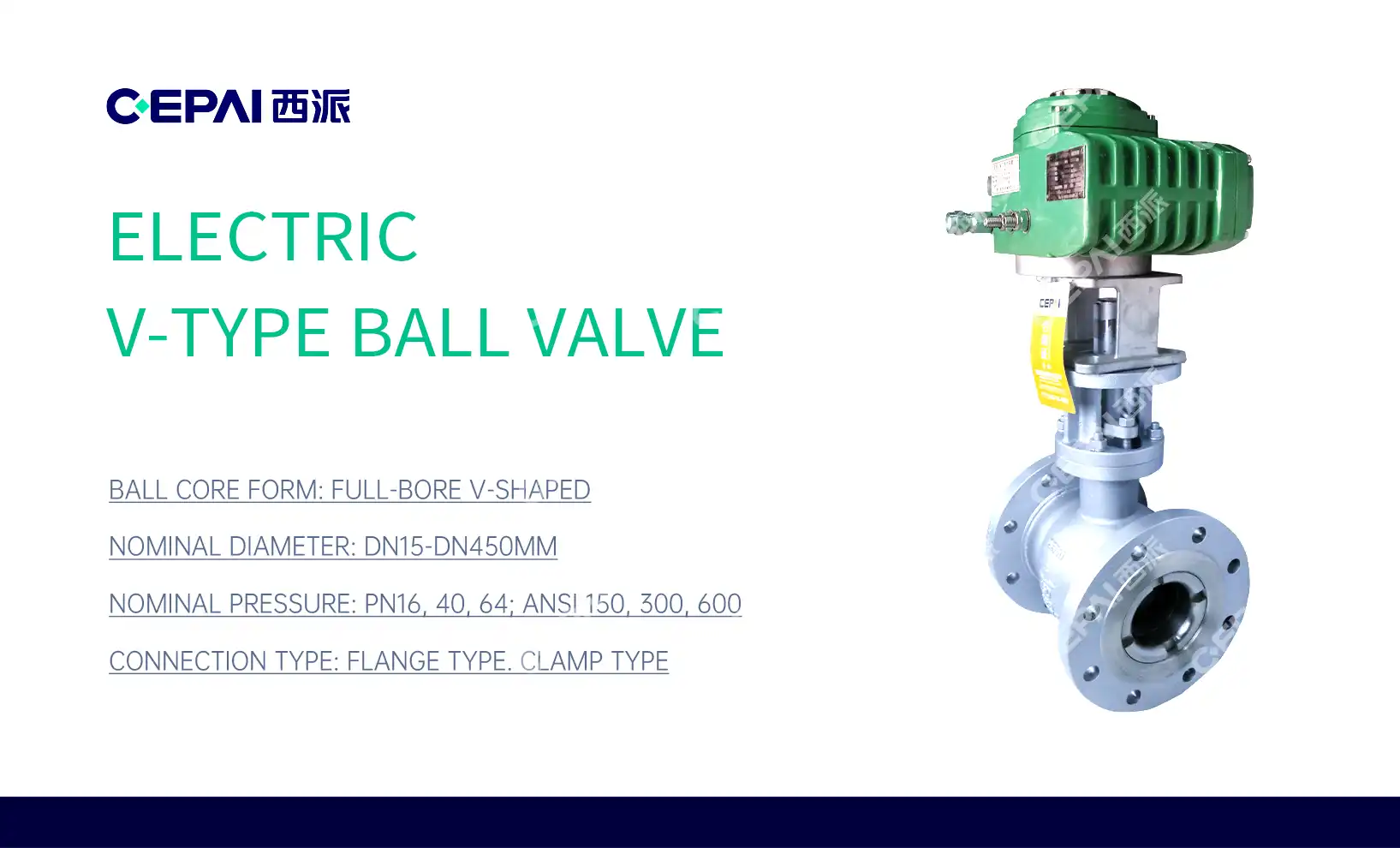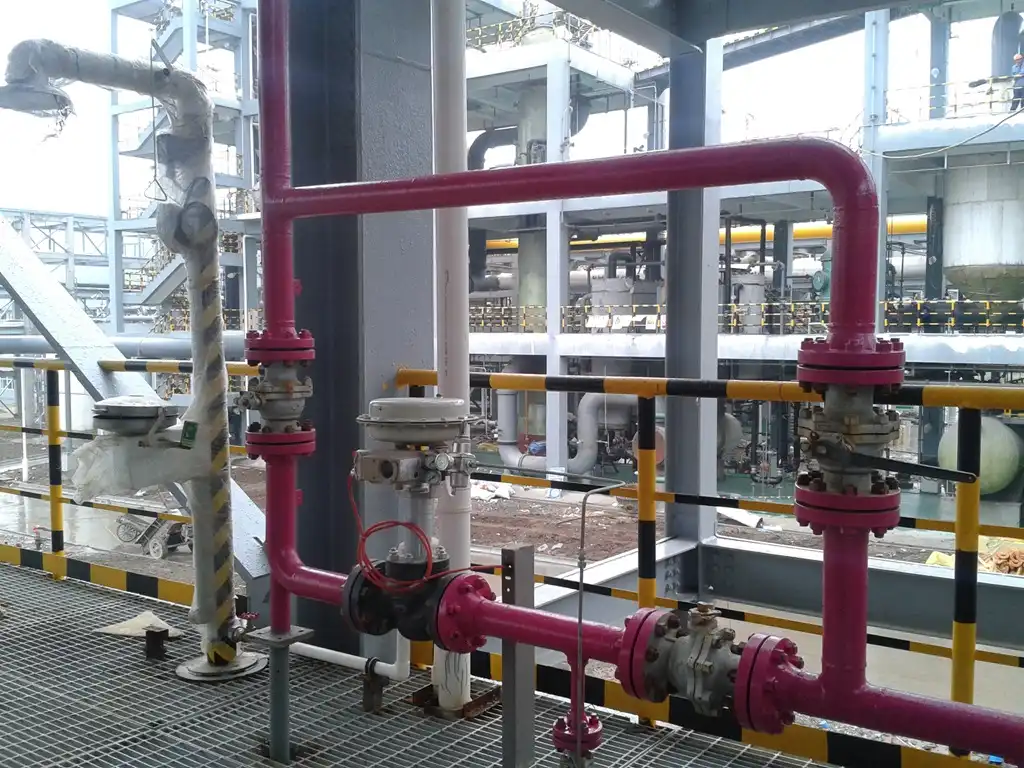Understanding Electric V-type Switch Ball Valves
Components and Functions
Electric V-type switch ball valves are sophisticated devices designed for efficient flow control. The main components include the valve body, ball, seats, stem, and electric actuator. The V-shaped ball allows for precise flow regulation, while the electric actuator enables remote operation and automation. These valves excel in applications requiring quick opening and closing, making them ideal for emergency shutoff systems and process control in various industries.
Advantages of Electric V-type Switch Ball Valves
The unique design of electric V-type switch ball valves offers several advantages over traditional ball valves. They provide excellent throttling capabilities, allowing for more precise flow control. The V-shaped ball reduces wear on the seats, extending the valve's lifespan. Additionally, the electric actuator enables seamless integration with control systems, enhancing overall process efficiency and safety. These valves are particularly valuable in applications where rapid response times and accurate flow regulation are critical.
Applications in Various Industries
Electric V-type switch ball valves find widespread use across numerous industries. In oil and gas production, they play a vital role in wellhead control and pipeline systems. The chemical industry relies on these valves for precise control of corrosive fluids. Water treatment plants utilize them for flow regulation and process control. Power generation facilities employ these valves in steam systems and cooling circuits. Their versatility and reliability make electric V-type switch ball valves an essential component in many industrial processes.
Pre-Installation Preparations
Site Assessment and Safety Measures
Before commencing the installation of electric V-type switch ball valves, a thorough site assessment is paramount. This involves evaluating the installation location for potential hazards, ensuring adequate space for the valve and actuator, and verifying the availability of necessary utilities. Safety measures must be implemented, including proper personal protective equipment (PPE) for all personnel involved in the installation process. It's crucial to establish clear communication channels and emergency procedures to address any unforeseen issues during installation.

Tools and Equipment Checklist
Assembling the right tools and equipment is essential for a smooth installation process. Key items include wrenches of various sizes, torque wrenches for precise tightening, alignment tools, and electrical testing equipment. Specialized tools such as valve seat lapping devices may be necessary depending on the specific valve model. It's advisable to have spare gaskets, bolts, and other consumables on hand to address any unexpected issues. Proper calibration of all measuring and testing equipment should be verified before beginning the installation.
Valve and Actuator Inspection
A meticulous inspection of the electric V-type switch ball valve and its actuator is crucial before installation. This involves checking for any physical damage that may have occurred during transportation or storage. Verify that all components are present and properly assembled. The ball should move freely within the valve body, and the seats should be in good condition. For the actuator, ensure all electrical connections are secure and that manual override mechanisms function correctly. Any discrepancies should be addressed before proceeding with the installation.
Installation Process
Positioning and Alignment
Proper positioning and alignment of the electric V-type switch ball valve are critical for optimal performance. Begin by verifying that the valve's flow direction aligns with the system requirements. Use alignment tools to ensure the valve is perfectly centered within the pipeline. Consider the space required for actuator operation and maintenance when determining the final position. In applications where vibration is a concern, implement appropriate supports to minimize stress on the valve and connected piping. Accurate alignment will prevent undue wear on valve components and ensure smooth operation.

Electrical Connections and Wiring
Establishing proper electrical connections is a crucial step in installing electric V-type switch ball valves. Begin by reviewing the actuator's wiring diagram and ensuring compatibility with the control system. Use appropriate cable glands to maintain the integrity of the actuator's enclosure. Implement proper grounding to protect against electrical faults and interference. For applications in hazardous areas, verify that all electrical components meet the required safety certifications. After completing the wiring, perform thorough continuity and insulation resistance tests to confirm the integrity of all electrical connections.
Calibration and Testing
Once the electric V-type switch ball valve is installed and wired, calibration and testing are essential to ensure proper functionality. Begin by calibrating the actuator's limit switches to accurately reflect the valve's open and closed positions. Adjust the torque settings to match the valve's requirements while ensuring adequate force for reliable operation. Conduct a series of operational tests, including full stroke tests and partial stroke tests, to verify smooth and accurate valve movement. Integration testing with the control system should be performed to confirm proper communication and response to control signals. Document all calibration settings and test results for future reference and maintenance purposes.
Conclusion
Installing electric V-type switch ball valves requires careful planning, precise execution, and thorough testing. By following this comprehensive guide, you can ensure a successful installation that maximizes the valve's performance and longevity. Remember that proper maintenance and regular inspections are crucial for continued reliable operation. As technology advances, stay informed about the latest developments in valve design and automation to optimize your industrial processes further.
FAQs
1. How often should electric V-type switch ball valves be maintained?
Regular maintenance is crucial, typically recommended every 6-12 months depending on usage and environment.
2. Can electric V-type switch ball valves be used in high-temperature applications?
Yes, but special considerations for material selection and actuator cooling may be necessary.
3. What are the signs that an electric V-type switch ball valve needs replacement?
Signs include increased leakage, difficulty in operation, and frequent actuator faults.
4. Is it possible to retrofit manual valves with electric actuators?
In many cases, yes. However, compatibility and load requirements must be carefully evaluated.
Expert Valve Solutions for Your Industrial Needs | CEPAI
CEPAI Group Co., Ltd. stands at the forefront of high-end energy valve manufacturing, offering cutting-edge solutions for the oil and gas industry. Our electric V-type switch ball valves are engineered to meet the most demanding requirements, ensuring optimal performance and reliability. As a leading valve manufacturer and supplier, we provide comprehensive support from selection to installation. Experience the CEPAI difference in valve technology. Contact our factory experts at cepai@cepai.com for tailored solutions.

References
Johnson, R.T. (2022). Advanced Valve Technology in Oil and Gas Applications. Industrial Flow Control Journal, 45(3), 78-92.
Smith, A.L. & Brown, C.D. (2021). Electric Actuators for Industrial Valves: A Comprehensive Guide. Automation in Practice, 16(2), 112-128.
Zhang, Y. (2023). Innovations in V-type Ball Valve Design for Enhanced Performance. Journal of Fluid Control Systems, 31(4), 203-217.
Peterson, M.E. (2022). Installation Best Practices for Critical Process Valves. Plant Engineering Quarterly, 57(1), 34-49.
Hernandez, L.F. & Patel, S.K. (2023). Safety Considerations in Valve Installation for Hazardous Environments. Industrial Safety Review, 28(3), 156-171.
Thompson, G.R. (2021). Maintenance Strategies for Long-Term Reliability of Industrial Valves. Asset Management and Maintenance Journal, 39(2), 88-103.

_1746598525968.webp)



